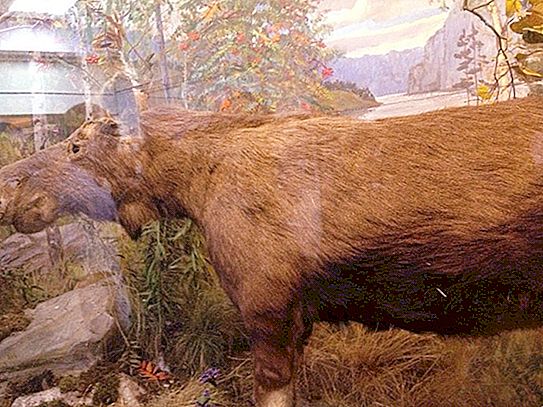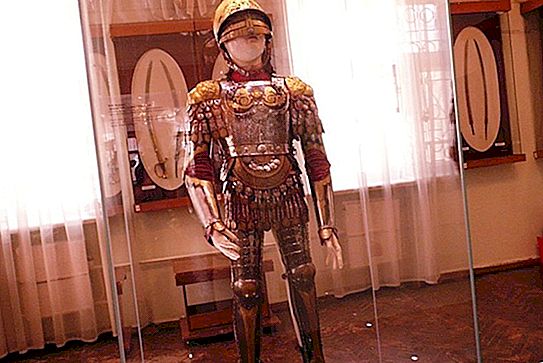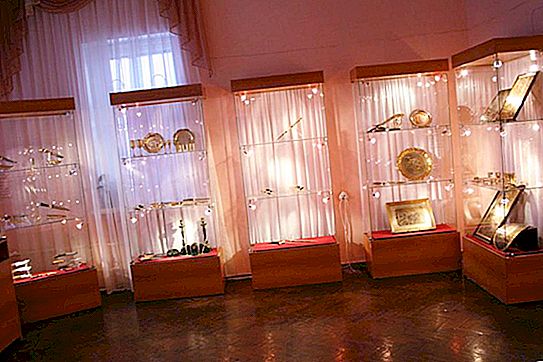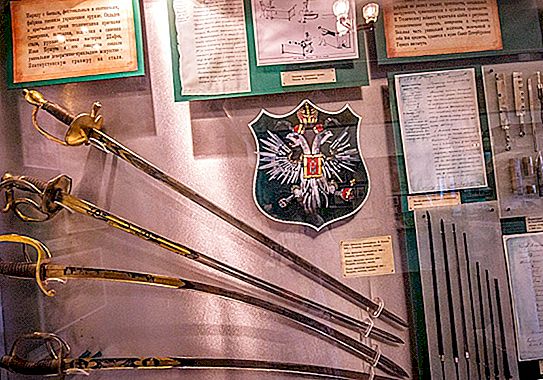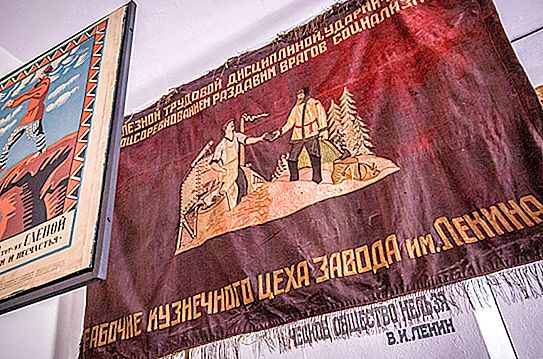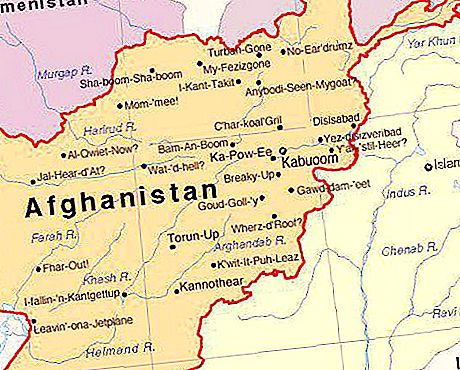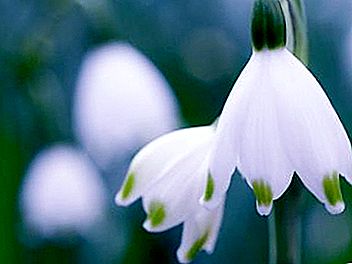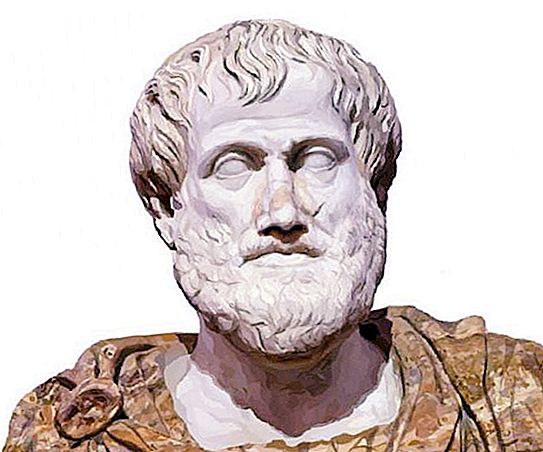The Zlatoust Museum of Local Lore was founded 193 years ago (1825), it is one of the oldest museums in Russia. His funds were repeatedly devastated, first by local authorities, then by the White Guards, and later by the Germans. But each time, the employees managed not only to save part of the meeting, but also to increase new values. Today, KMZ carefully stores more than 44 thousand unique exhibits.
History
The first exhibition halls of the public museum were opened in the city of Zlatoust in 1825, the exposition was dedicated to mining, which had long flourished in the region. The founders of the institution were P. Anosov, Manager of the Arms Factory, and P. Porozov, Manager of the Miass Factory. The basis of the exhibition was the collection of edged weapons of the Arsenal, formed before 1817. Fossil minerals were added to the existing collection, the collection of stones quickly expanded and was considered the second in Russia in terms of wealth and diversity.
In 1915, the Chrysostom Museum of Local Lore lost its space in the Arsenal, which actually meant its closure. The second blow comprehended the collected collection in 1919. Kolchak workers robbed the Zlatoust factories and took all the valuables to Tomsk, and museum exhibits also went there. Later, only a small part of the previous collection was returned; most of the items were lost.
After the revolution
A new page in the history of the Chrysostom Museum of Local Lore was opened in 1925. The collection includes exhibits of the art-industrial museum, industrial exhibition and surviving exhibits of the Arsenal. Several rooms of the local technical school were allocated for the exposition. In 1929, the museum moved to the buildings of the Holy Trinity Cathedral, closed for worship. The opening of the exposition took place in May of that year.
In 1933, the local authorities finally decided to demolish the cathedral, the museum of local lore was transferred to the former house of the mountain chief, where it is still located. Employees made attempts to preserve the temple, citing the fact that it is of architectural and historical value. But ideology won. In November 1934, the cathedral was razed to the ground.
During the Great Patriotic War, the activities of the local history museum of Zlatoust was curtailed, it was planned to give the premises for housing for physicians at a military hospital, but as a result, the evacuated NKVD archive from Kharkov was located in the halls. The resumption of museum work began in 1944 with the repair and planning of a permanent exhibition.
Zlatoust City Museum of Local Lore reopened to visitors in 1945. In 1960, the house of the mountain chief was given the status of a monument of architecture. In the late 60s, the building required major repairs, in connection with the start of work, the museum was closed. The restoration of the house was overhauled and completely restored its historical appearance. In the renovated building, activity resumed in February 1976.
Collections
Permanent expositions of the local history museum of Zlatoust are located in 15 halls. The funds store more than 44 thousand items.
Main collections:
- Painting. The section presents 264 paintings (19-20 centuries).
- Graphic arts. The collection contains 1142 works of different periods.
- A rare book. The background contains more than 6.5 thousand book volumes (18-21 centuries).
- Engraving on steel. The unique collection consists of works by local artists. The fund stores 850 items (weapons, household items).
- Ceramics, glass and porcelain. The collection contains more than 500 items.
- Weapons An extensive collection has been collected for 100 years, most of it was lost during the Civil War. In storage are 119 units of weapons with decorations and 80 units of cold steel without decorations.
- Soviet poster - 175 items (1918-2000).
- The mineralogical collection is the most extensive in the local history museum of Zlatoust. The fund contains more than 6 thousand minerals of the Urals, various deposits of Russia and foreign countries.
In addition to these collections, the public can get acquainted with exhibits of Kaslinsky and Kusinsky iron castings, postcards of different years of release, coins of many nations and states, including the period of Tsarist Russia, and many others.
Tours
The Zlatoust Museum of Local Lore offers extensive programs for exploring the region, its history, nature, and crafts.
Basic excursions:
- "Mountain of gems of the Zlatoust Urals" - a theatrical tour. Visitors get acquainted with the history of the city, the region. The main target audience is middle and high school students.
- “Horseshoe for Happiness” is held in a playful way, the program is based on the tales of Bazhov.
- Sightseeing tour of the museum.
- Thematic excursions (“From the malachite box”, “Zlatoust in the 19th century”, “Berendeevo kingdom”, “Zlatoust at the turn of the century”, etc.).
- Bus excursions (sightseeing tour of the historical places of the city, "Orthodox Churches of Zlatoust", "Defending the Fatherland").
The local history museum of the city of Zlatoust is one of the centers of culture and is engaged in active educational activities. For children and adults a series of events is held annually dedicated to national holidays - Maslenitsa, Easter, New Year's holidays, Christmas balls are brightly and fabulously held. Events such as “Kapustinsky gatherings”, “Visiting a brownie”, “Visiting a tea” and many others where visitors can socialize, learn new things about traditions and history have also become regular.
Prospects
The museum of local lore awaits the opening of another historical site, which will house an exposition dedicated to Russian weapons. The first Russian gun factory was opened in Zlatoust by Peter I in 1815. In the same year, on the territory of the plant, next to workshop No. 19, the Arsenal building was built - storage facilities for storing weapons.
Today, the workshop and former military depots are part of the historic architectural ensemble of the city center. Since 1995, they are recognized as historical monuments of federal significance. Currently, work is underway to restore and restore two buildings. In the future, they plan to open a museum-production complex.
Exhibitions
Preserving the history of the region, increasing funds, museum staff conduct ongoing educational work. The exhibitions of the local history museum of Zlatoust attract visitors with interesting topics and a rich display. Over the first half of 2018, over 20 events were held. One of the ongoing projects is the Open Letter exhibition, which displays postcards, many of which date back to the 19th century.
The exposition is interesting in that having become acquainted with examples of the epistolary genre of old years, you can join it. Visitors are given the opportunity to sign the card in ink using a fountain pen and send it to loved ones. If the pen is not given in hand, you can use an old typewriter. The card is sent anywhere in the world.
